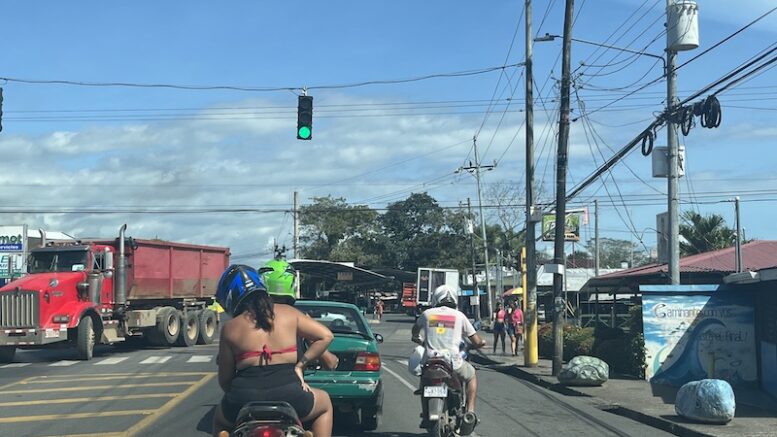While preparing for our recent trip to Costa Rica, a common theme emerged from the various travel documentaries, blog posts, and guidebooks we watched and read—driving in the land of Pura Vida is a bit more challenging than the U.S. Car rental options are not the same, you might want to consider having your car shipped to Costa Rica instead.
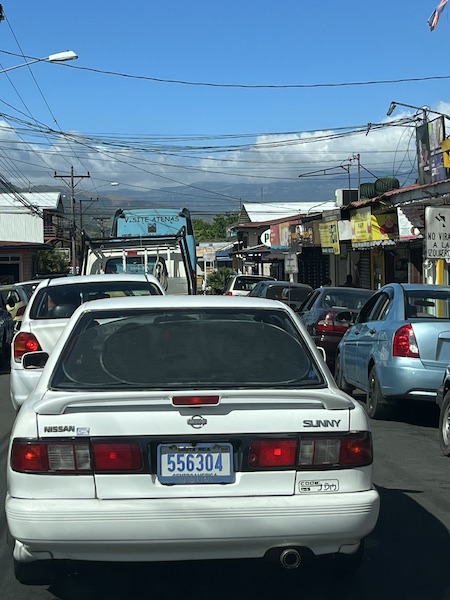
Traffic in Atenas
Car Rentals and Trip Preparation
To begin, if you have a valid drivers license you don’t need to apply for an international license. Plan to purchase additional, comprehensive, insurance with the rental car company that covers the vehicle and drivers in the event of an accident (we purchased travel insurance with our flights and still opted for the secondary coverage with the rental car company). We strongly recommend renting a vehicle with 4-wheel drive and GPS navigation if you are not planning to have international cell phone coverage. By default, most rental cars in Costa Rica (and other parts of the world) are manual transmission. If you are not comfortable driving a stick, pay an up-charge for automatic transmission. To ensure safe transport around Costa Rica, you’ll see why in a bit.
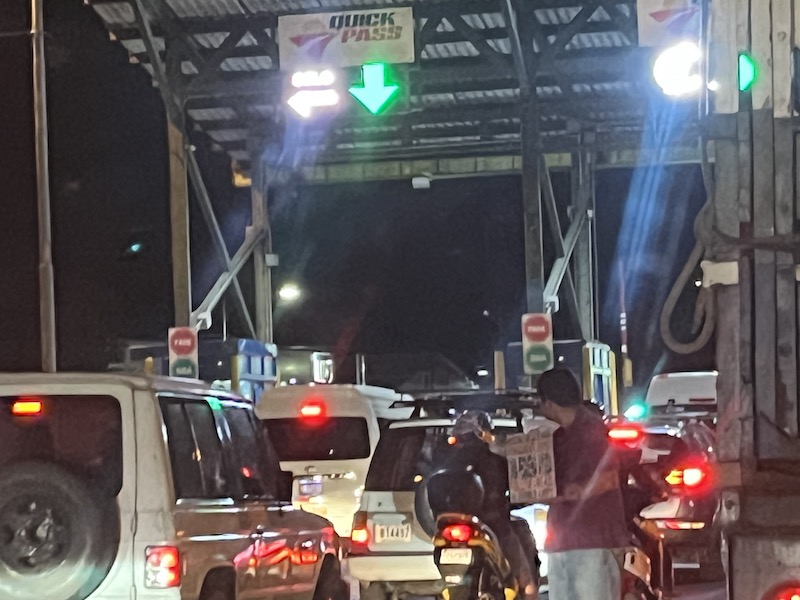
Toll Stop
Before you go, download the Waze crowdsource driving direction app and familiarize yourself with the interface. Units of distance and speed are in kilometers and kilometers per hour, a setting that defaulted to miles and miles per hour on my phone (you may want to change that setting; for us it wasn’t a big deal as we were mostly using Waze for directions and it seemed like the speed limit was not observed outside of city limits). Instead of entering a street address into Waze, enter the name of the hotel, restaurant, or attraction (we read street signs and house numbers were not common outside of San Jose and this held true).
Worth packing (or purchasing ahead of time) is a phone mount for a cupholder or vent, charging cable, and a USB charger that fits into a cigarette lighter (although our rental car had a USB hub we discovered only after purchasing the cigarette lighter option at a local convenience store). If you need a clean windshield for such things as clear line of site, you may want to invest in wipes or bring an old rag. A giant parrot, I assume, pooped over the passenger side front window somewhere in the rainforest and I enjoyed several hours of obstructed vision. Gas stations are few and far between if you do want to stop and clean your windshield.
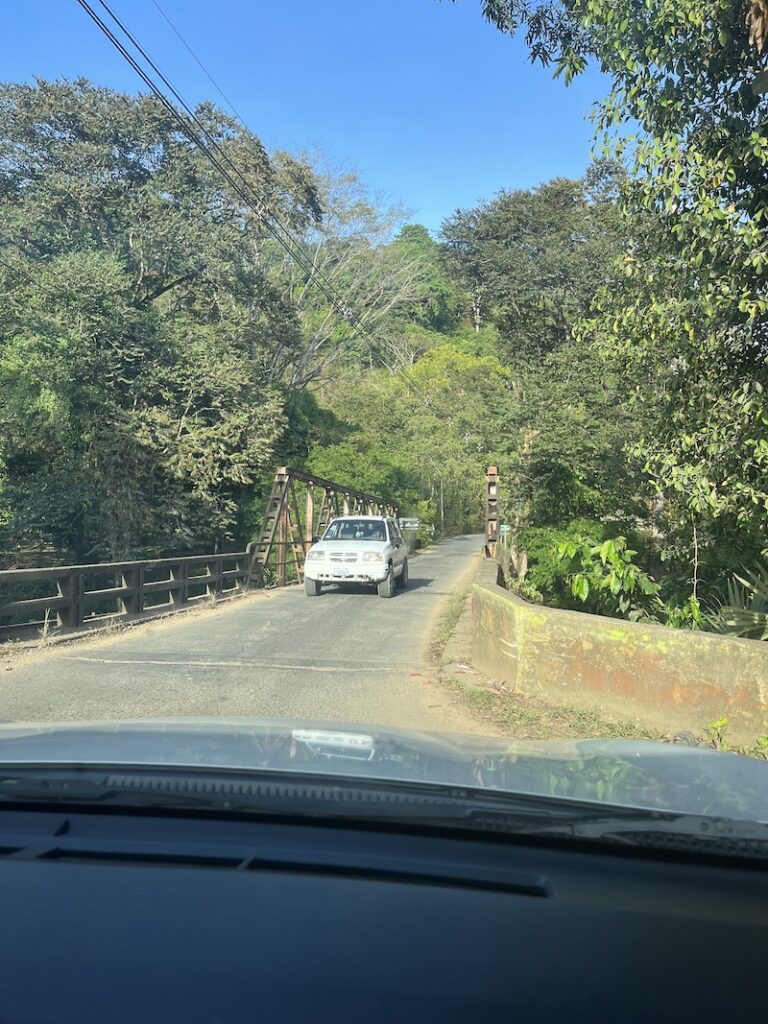
One Lane Bridge
Before You Drive
Waze gave us different options for directions, slow and fast and indicated when the fast route was on a toll road. If you are leaving directly from the airport, buy something small at the gift shop or convenience store before you embark on your journey as you’ll need small bills or coins to move with the flow of traffic. On the interstate, the right-hand lane is the bus lane; busses stop and cause the flow of traffic to come to a complete stop. I’m not entirely sure how pedestrians arrive at the bus stop, but be aware this happens abruptly and often.
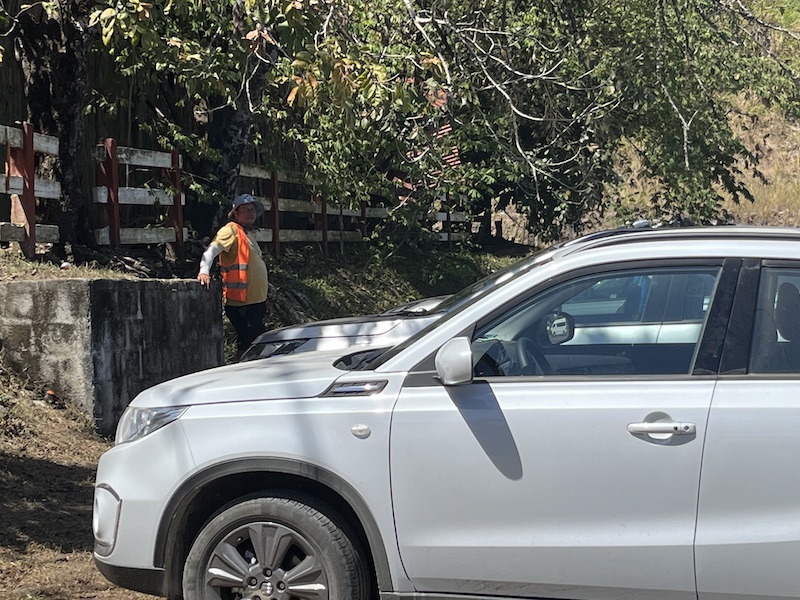
Parking Lot Attendant
You won’t need to worry about driving on the opposite side of the road or shifting with your left hand and generally the same traffic rules with a few exceptions. We arrived at night were glad we had read this extremely helpful blog post beforehand as we encountered a single-lane bridge on the way to our first hotel and knew to yield to oncoming traffic (whoever arrives at the bridge first has the right-of-way).
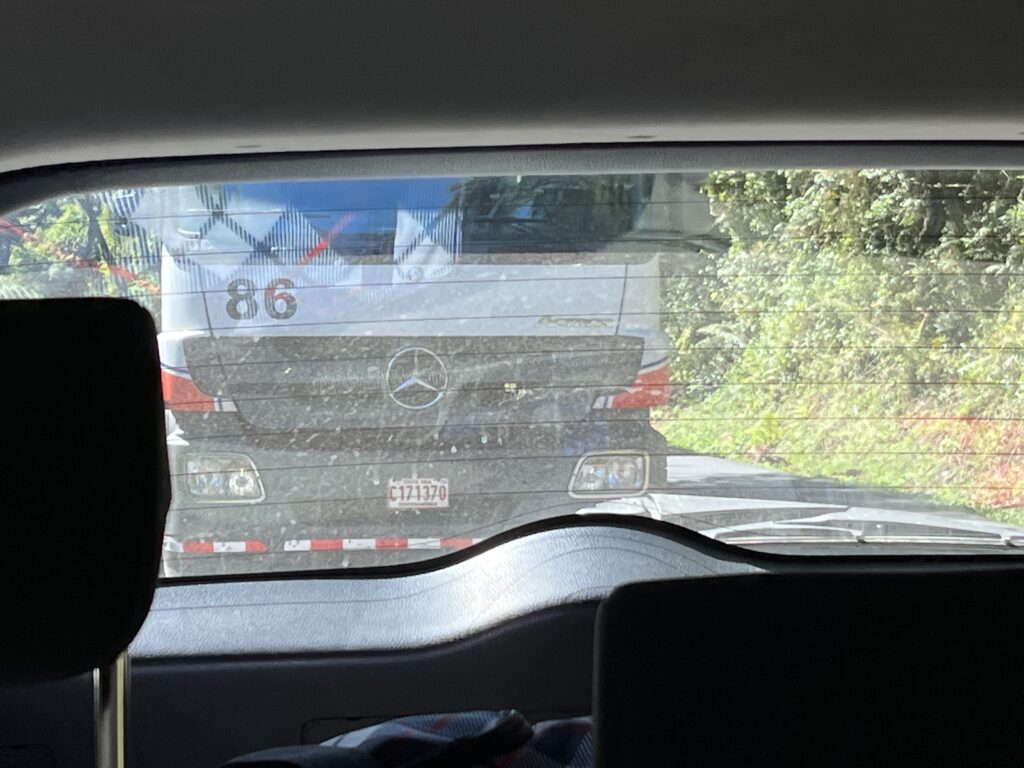
Being Tailgated on the Pan-American Highway
Safety Concerns
Another key difference between the U.S. and Costa Rica is that vehicles do not yield to pedestrians or bicycles (we didn’t travel with kids, but stressing crossing at designated crosswalks and traffic light crossings seems particularly important for families). Oftentimes the only way to cross a street was to wait for a break in traffic, which seemed more terrifying than exciting.
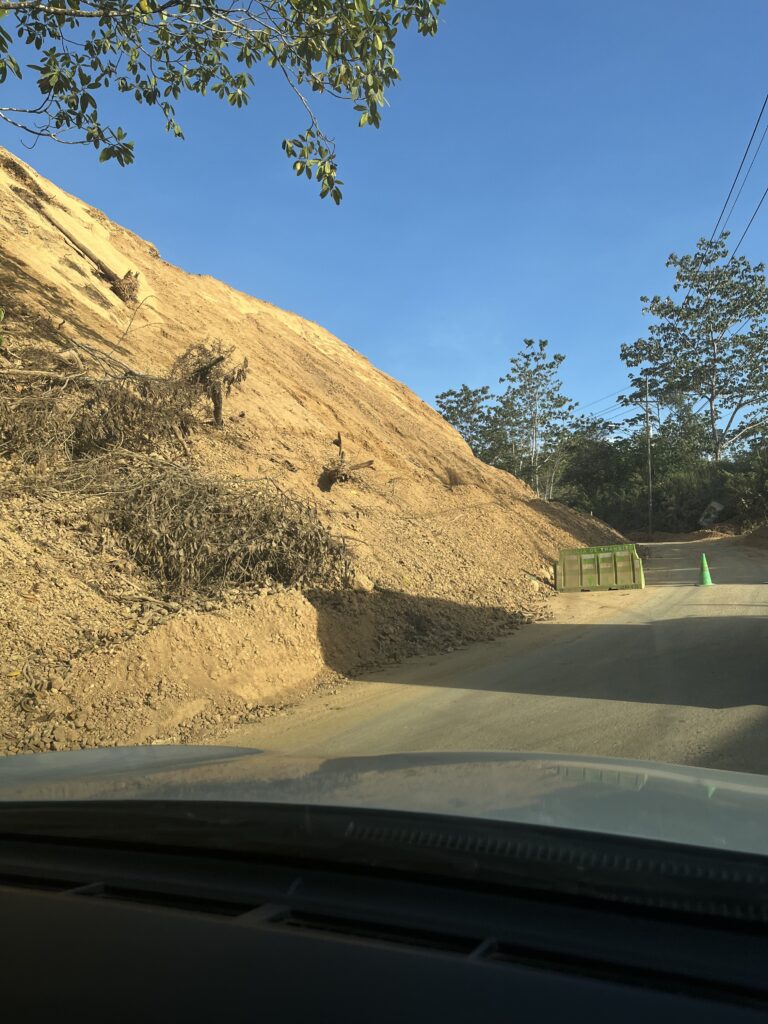
Landslide and Road Closure
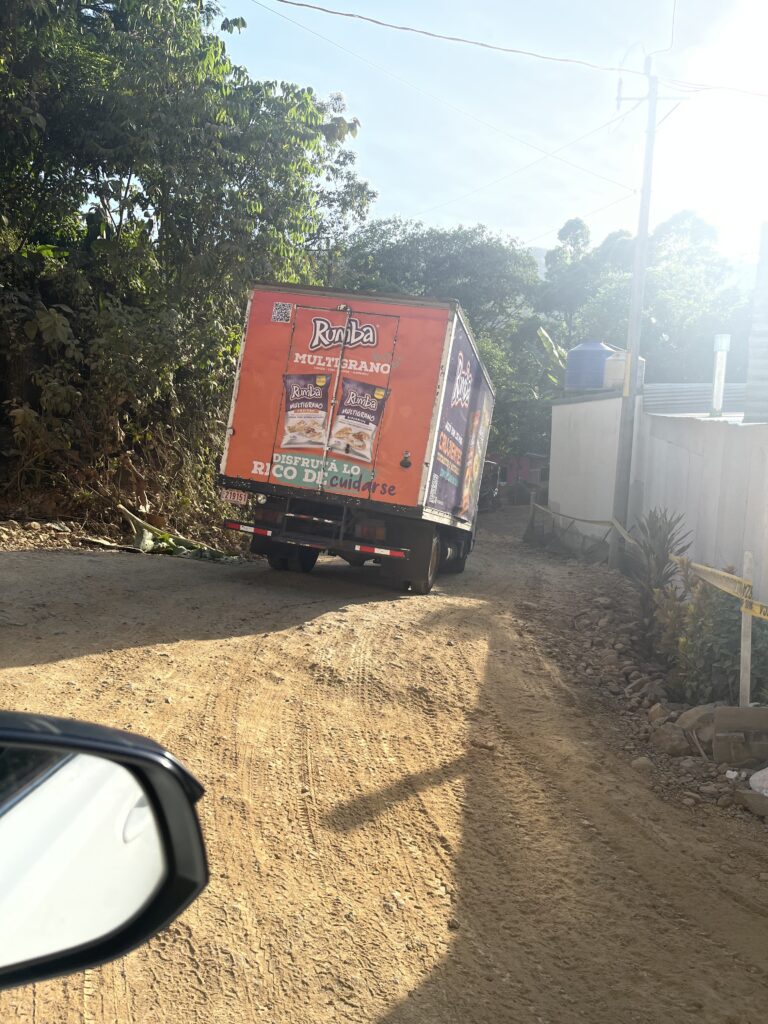
Landslide Detour
In the event of a traffic accident, cars do not move out of the road to allow vehicles to pass (police document the scene and direct traffic if possible). When parking, look for yellow paint on the side of the road. Do not park anywhere with yellow paint or other signs (like taxi or hotel unloading zones). One article we read said your license plate could be removed in the event of a parking violation (navigating that situation with the rental car company sounds miserable).
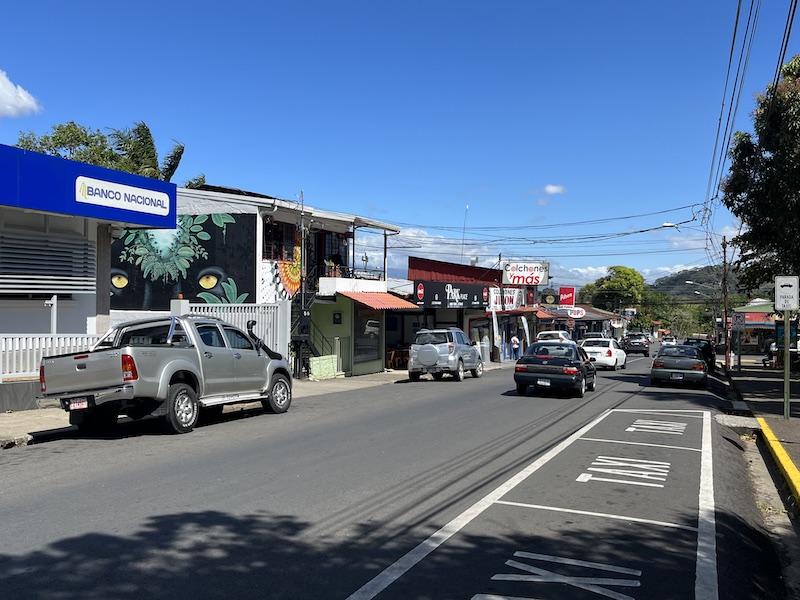
Taxi Parking and Yellow No-Parking Zones
On the subject of terrifying and exciting, note that motorcycles and mopeds are extremely common on city roads and on the highway. Often, these vehicles pass on the center lane (between you and oncoming traffic) and on the right side of your car. If traffic slows, expect to be passed on both sides without warning. Busses and tour busses are also common and travel at amazingly fast speeds in the country and city (especially in the city; keep a close eye on your toddlers).

Paid Parking Lot
Many articles we read advised us not to leave any unattended valuables in the car and to park in secured parking if that was an option. We paid a parking attendant a small tip for watching our vehicle while we visited a popular tourist stop and ate lunch. He communicated his expectation ahead of time and was happy to collect the fee either before or after our stop. In general, we felt very safe in Costa Rica but after having my purse stolen earlier this year in a small town in Oregon, I could not fathom the stress of losing my passport and prescription glasses in a foreign country. In San Jose, our hotel parking was gated after 6pm and the attendant and his family lived in the apartment above the lot (allowing 24-hour access to our vehicle should we need it).
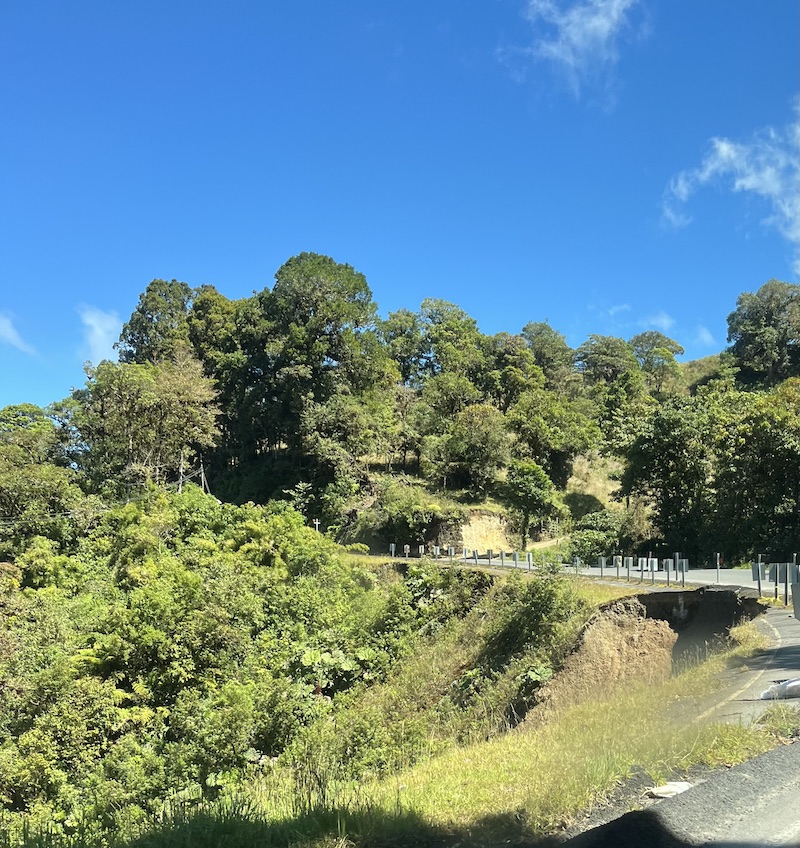
Erosion on the Pan-American Highway
If you do not feel comfortable driving at night, do not drive at night in mountainous terrain in Costa Rica. On both rural (dirt) roads and on the Pan-American highway, we experienced detours caused by landslides, dangerous road erosion, and found ourselves wedged between semi-trucks without a safe breaking distance. Passing lanes end without signage and guardrails are not common at all. We made the mistake of traveling down a treacherous road with blind switchbacks before the sunset with no cellular reception and white knuckled the entire trip back up the mountain in complete darkness.
Electric Vehicles in Costa Rica
One really positive takeaway from our driving adventure in Costa Rica was the prevalence of electric vehicle charging stations in the city and country (at our most remote hotel the charging station was affixed to a tree). Look for the adorable blue charging station signs (EVs aren’t as common as the U.S. but we did notice a handful on our weeklong trip).
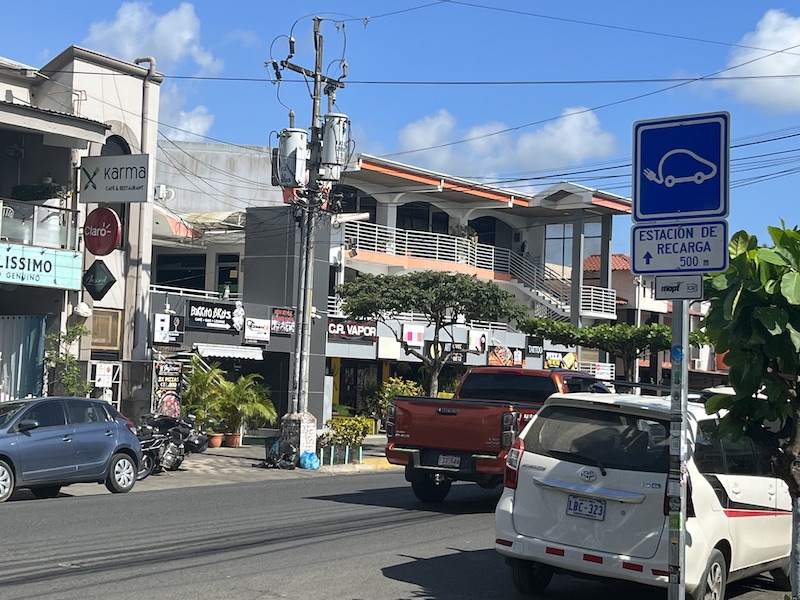
Electric Vehicle Charging
In general, I’m glad we reserved a rental car and had an adventurous road trip in Costa Rica. Definitely do more research and decide if this route is the best for you and your family. Look for more travel tips on what to do and where to visit and stay in Costa Rica soon!
Happy Trails!

